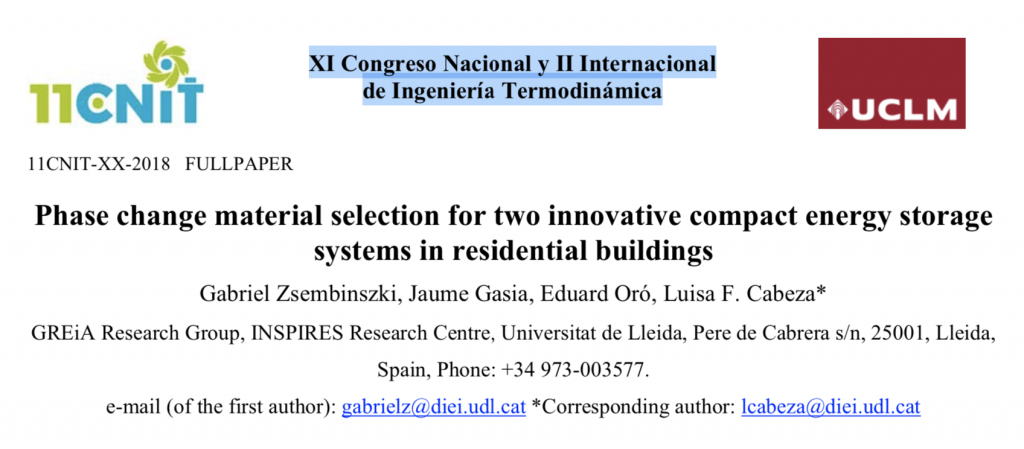New conference paper released by University of Lleida at XI Congreso Nacional y II Internacional de Ingeniería Termodinámica

Within the framework of HYBUILD, an EU Horizon 2020-funded project, two innovative compact hybrid electrical/thermal storage systems for stand-alone and district connected residential buildings will be developed and tested in three demos located in Spain, France, and Cyprus. One of the innovative systems is aimed to be placed in buildings located in Mediterranean climate regions, where cooling loads are dominant, while the other system is intended for Continental climate regions, where the heating demand is dominant. Each system will include, among others components such as a sorption storage system and domestic hot water tanks, a latent thermal energy storage (LTES) system that will be connected to a heat pump through an innovative heat exchanger made of aluminium and filled with phase change material (PCM). In both cases, the heat pump works with electricity provided by a photovoltaic system that is, at the same time, connected to an electrical storage battery. The aim of using the LTES system is to enhance the use of solar energy, which will be translated into a reduction of the building energy consumption and related costs. This study focuses on the selection of the most suitable PCM to be used in each system. On the one hand, the LTES system of the Mediterranean system will be used to store cold to reduce the cooling demand. Taking into account that, according to the design parameters, the heat pump will require a refrigerant evaporation temperature around 2 oC, and the building cooling system will require water supply in the range from 7 oC to 12 oC, the PCM melting temperature range should be within 0 oC and 7 oC. On the other hand, the LTES system of the Continental system will be used to store heat to reduce the domestic hot water (DHW) demand. The LTES will be located at the compressor outlet and will be charged by the hot refrigerant that exits the compressor at temperatures as high as 120 oC. During the discharge process, the heat stored in the LTES will be supplied to the DHW at a temperature in the range between 50 oC to 55 oC. As a consequence, the range for the PCM melting temperature investigated in this case should be between 62 oC and 68 oC. Besides the melting temperature, other selection criteria considered include the PCM melting enthalpy and melting range, maximum allowed working temperature, density, thermal conductivity, availability, cost, and compatibility with aluminium. To decide the ideal PCM candidate for each system, a decision matrix was defined and used, by applying a weighted score to the selection criteria items according to their importance. The preliminary results indicate that for the Mediterranean system the best candidate is the commercial savE OM3 PCM, while for the Continental system, another commercial product PureTemp 63 is the most adequate option.

